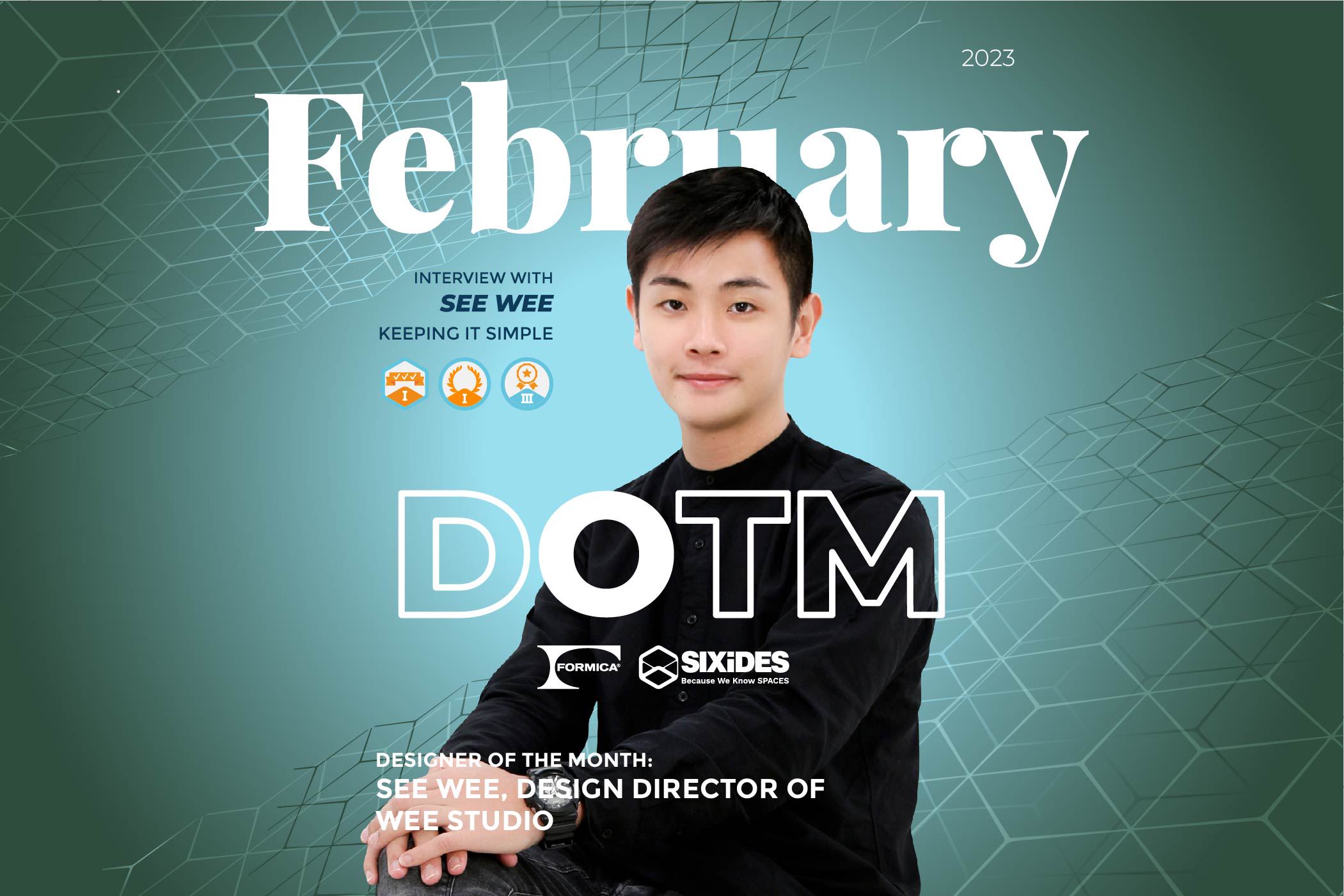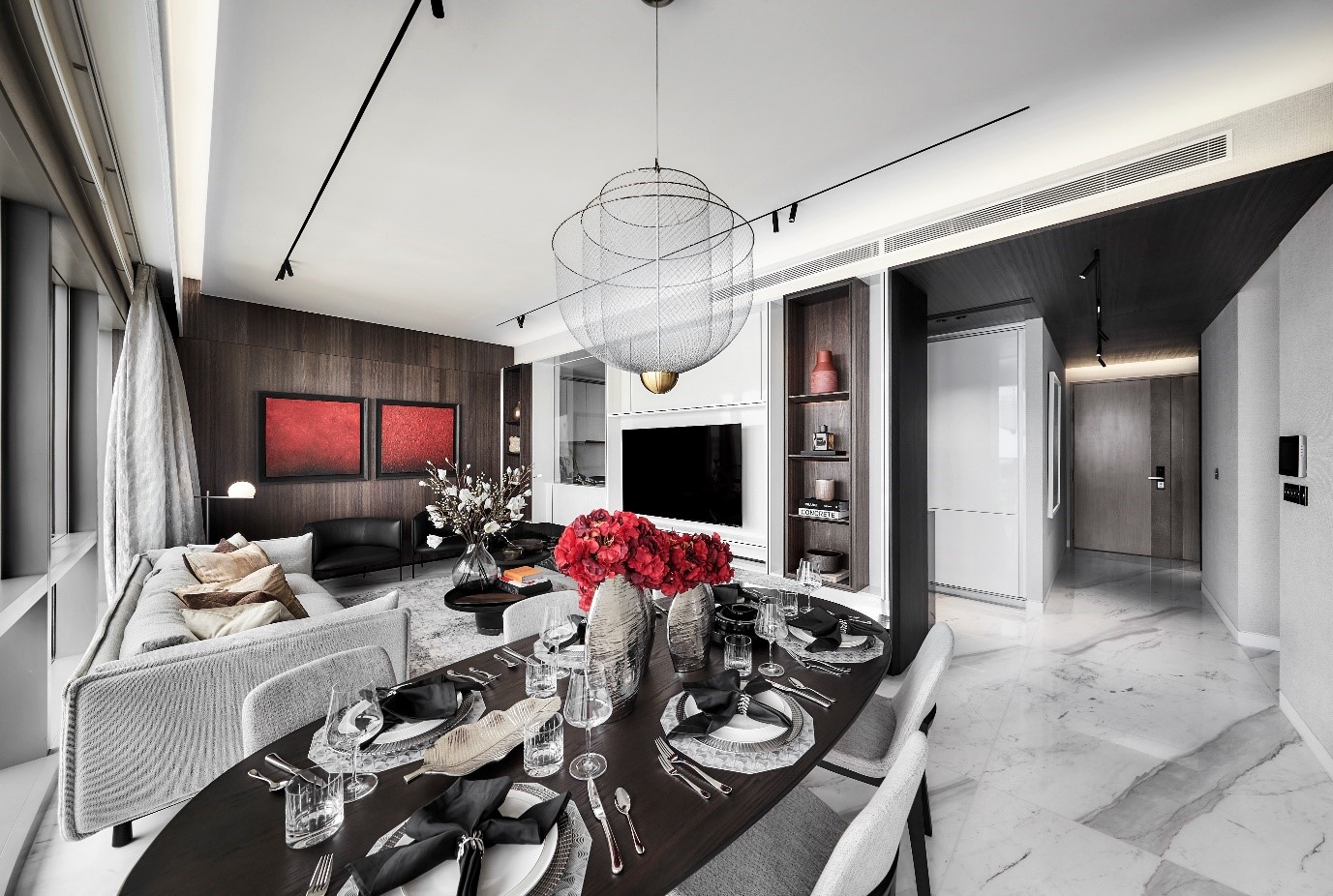
Interview with See Wee: Keeping it Simple
More is less. Or is it less is more? Or just more or less? Sometimes, too many things and thoughts get in the way of actually getting things done. However, you if want someone who’s laser-focused about what’s important and getting it done, See Wee’s your guy.
See Wee is the Design Director of Wee Studio, and it was founded in 2012. A true-blue interior designer from the very beginning, he received his degree training from Nanyang Academics of Fine Arts (NAFA).
Being a founder and director, it was hard to reach him but, fortunately, he left his office window open. So, we let ourselves in and wrangled an interview out of him.

What was it that got you into interior design?
My interest in tools-making and hands-on activities was piqued through lion dancing, which I participated in since young from watching seasoned performers do their act during Chinese New Year celebrations.
Wow, really? Lion dance?
Yeah, we’ve been at it for close to 30 years now. I started out young. It was through lion dance that I had the opportunity of prop-making. I’d say that ever since, I’ve always had an interest in the technical and design aspect of things.
After high school, I chose to go into the interior design course which would allow me to pursue this interest. I find lots of satisfaction with completing end-products and spatial experiments in this line of work.

Safe to say that it’s had a big impact your life.
I would say that, partly, this has helped to streamline my thought process – the thought process of design and prop-making are similar, and so is the satisfaction that comes with a job well done.
It was really what got me started down the path to becoming an interior designer.
What were some of the challenges of starting up your own business?
When I started out, it was a unique situation as there weren’t many young designers who had their own practice. Many relied heavily on connections and word of mouth to reach out. So, for us young designers, we used social media – which was relatively new at that time – to showcase our profile. I was surprised at the positive responses we received.
How have you grown?
In the past, I had my much-respected mentors who “tekan” trained me, old-school style – very army-like. They used to throw us into the sea, let you figure things out by yourself, and then they provide feedback. They drilled me a lot; do it a hundred – no, a thousand times. That said, I’m pretty glad I survived this.
Hand-sketching was another thing that was prevalent. Every day, even today, I’m sketching daily – it is part of my thought process. If you ask juniors to do the same, they’ll show you a digital sketch instead. Their way of expressing things are different these days.
The old-school style really helped in my training.

Who are some people that you look up to – your heroes?
Jean-Marie Massaud and Mies Van de Rohe. Their design directions inspire me – the way they are minimalist in their approach. I lean towards that. I like clean cut, uncluttered designs.
What about your first experience doing interior design?
Before National Service enlistment, I spent half a year as an exhibition designer. It was my foundational training. I was learning the ropes from very experienced professionals.

What would you say is your most memorable work?
I would say my own apartment which I’ve been living in for some time now. It’s experimental and unconventional. There are some things that has been in the back of my mind which I wanted to try but couldn’t because of practical reasons and such.
One of the things we experimented with, was mounting a mirrored ceiling that weighed at least 300kg. It was a huge liability – I wouldn’t be able to let my end user shoulder the responsibility without scheduled routine checks. Design, in most cases, must solve basic design challenges. For example, my bathroom basin mixer, instead of being mounted on the tabletop or basin, was mounted from the ceiling. For others, they’ll worry about knocking their heads trying to wash their face in that sort of sink.

What’s your design philosophy?
Unique-selling Point (USP) and Keep It Simple and Straightforward (KISS).
With USP, I’m thinking about how jobs often end up being a problem-solution type project – you’ve got a problem, here’s how we solve it. Bear it in mind that it is equally important to have positive talking points in a project. For example, we were working on an F&B project in a shophouse. Most shop-house will have airwells in the centre of the house, but this one didn’t. What we did was to put a light box that was flush with the ceiling to create an “airwell” effect. It really stood out and the shop owner would often invite customers to have all day dining under the “natural skylight”.
On the flipside, if you have too many USPs, you lose the “wow” factor.
For KISS, sometimes common sense isn’t so common. If you think too deeply about everything, you lose focus. Keep it simple. Focus! It’s a simple strategy to tackle design problems. You may lose sight of the overall theme if you keep focusing on the small things.
Where do your ideas come from?
One of our approaches is based on site observation. At this point, it’s second nature, instinctual for us. It helps us understand the contextual requirements of each project.
Other times, it’s right from the design briefs when we meet our clients and vibe off each other. Or it can be from a photograph, a certain mood, a certain colour theme. There is no hard and fast rules on this one.
What’s your advice for up-and-coming interior designers?
Have passion. It can be challenging in this career. You must have an eagerness to make your way through and see the end-product.
Posted on 3 March 2023
Kenny Tan,
SIXiDES Editorial Team
Share
Related Tags
More Articles about Designer Of The Month

Interview with Carmen Tang: Anything but mediocre
You got a new home, and you want it to be uniquely yours. Your hand reaches for a magazine for inspiration, when, out of the blue, SMACK!

Interview with Leon Luo: Being authentic
It’s easy to get lost in the glitz and glamour of what others have. So much so that it usually takes something, or someone, to get you find out who you really are and what you really want. For property owners, that someone might be Leon Luo.

Interview with Hilary Loh: More than just a show
When it comes to show rooms, it’s more than a pretty face. It’s a pretty face with a deep and resonant story to tell. A story that speaks to the soul. And that it takes a special storyteller to bring out that tale. And that person is Hilary Loh.

Interview with Dennis Cheok: A Series of Serendipitous Circumstances & Sweat
It takes a special kind of person to just roll with it when things go sour. With Dennis Cheok, when life gives him lemons, he doesn’t just make lemonade; he turns it into an Avant Garde sculpture with a story to tell.

Interview with Jackie Lai: Passion for Design and the Future
Some who become interior designers are in it for the money. Others because their parents told them to. And then you have the passion-driven ones; totally and madly in love with design, taking up impossible jobs for the love of it. Jackie Lai is one such person.

Interview with Averse Yau: Designing Therapeutic Homes
Old habits die hard, they say. But did you know that, with just a few design tweaks to the home, you could change your entire lifestyle? You didn’t? Then you should really talk to Averse on how you might redesign your life.
.png)